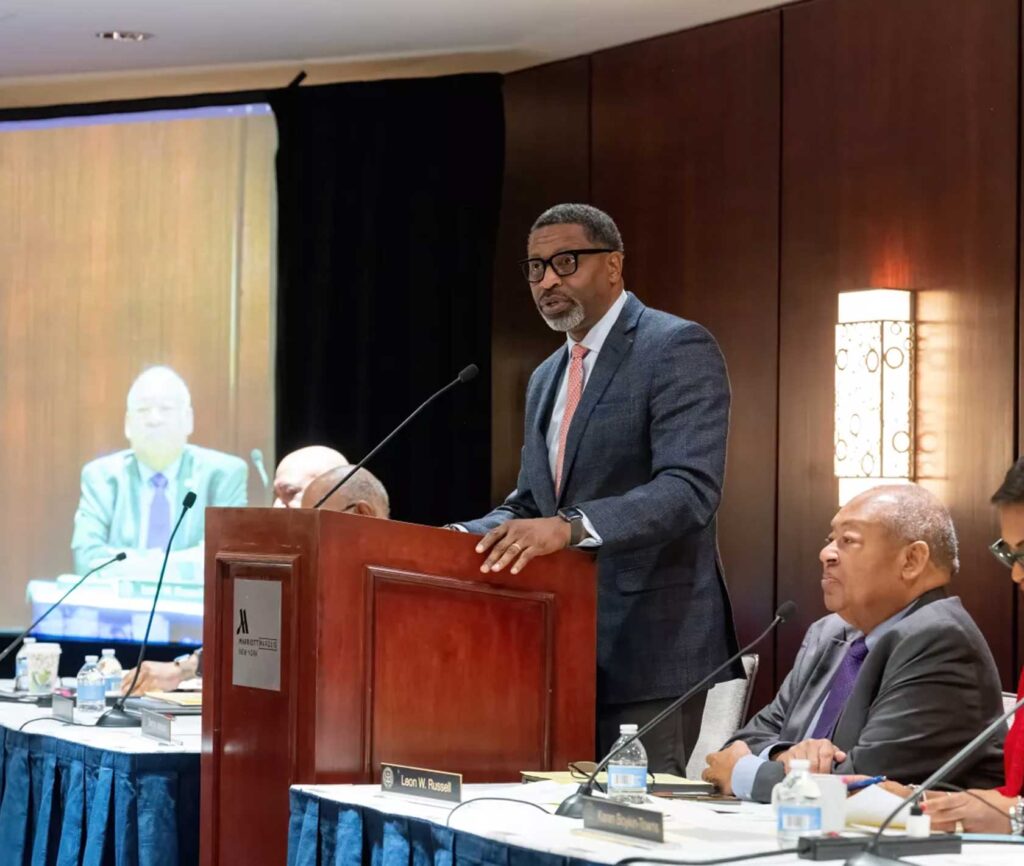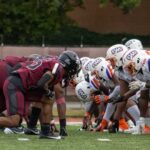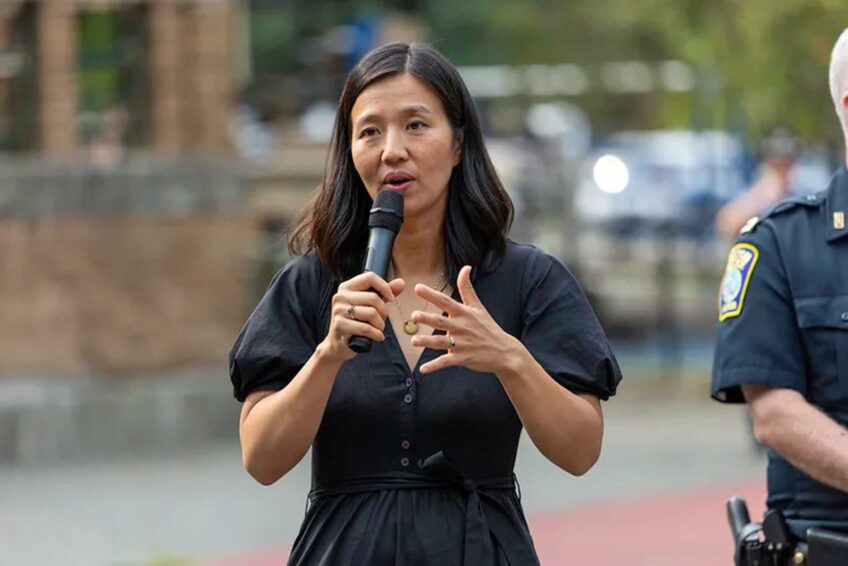NAACP pushes back on federal guidelines limiting DEI, free speech in classrooms

The National Association for the Advancement of Colored People sued to stop the federal government from propagating its interpretation of civil rights law in March. Pushback was inevitable.
Though the NAACP won initially a preliminary injunction, the Department of Education moved to dismiss the case.
Disputed documents concern the role of race in education and Title VI of the Civil Rights Act of 1964. The suit alleges First and Fifth Amendment violations, plus the violation of the Administrative Procedures Act.
In the ensuing crossfire, each side established its position on the constitutional and legal grounds. Their dispute, unlikely to dissipate before all appeals are exhausted, may provide the judiciary an opportunity to either develop or delimit the 2024 Students for Fair Admissions v. Harvard decision.
The Supreme Court’s session begins in October.
Fifth Amendment protects due process
The Fifth Amendment compels the government to clearly communicate expectations and give law enforcement enough guidance to avoid arbitrary acts.
The NAACP showed “that the challenged documents are unconstitutionally vague because they prohibit certain DEI-related initiatives without identifying the specific programs or courses that” lead to withheld funds, per an April ruling.
In June, the government argued that “a vagueness challenge will fail so long as the Title VI Documents provide a comprehensible normative standard, even if imprecise.”
Certain terms don’t need to be fully defined because discrimination isn’t solely a matter of terminology. “The touchstone is whether [a] program discriminates on the basis of race,” department lawyers wrote.
Only a “hostile racial environment” calls for recourse. Since 1994, that requires “severe, pervasive or persistent” racial harassment.
One document offers a “sliding scale” with two poles: “an elementary school that sponsors programming that acts to shame” certain students would be unlawful, while an “exploration of similar themes in a class discussion at a university” would be less problematic.
Silent on secondary grades, the government admits “there might be some edge cases.”
It knocks “the overreaction” of some school districts that cut back before judicial intervention. “Their unreasonable interpretation of the Title VI Documents fails to show that those independent actors” reacted predictably, they contended.
In Decatur, Ga., NAACP members feared the loss of an African American history course before the rulings.
The school board initially rescinded its “Equity Policy and its School Board Governing Policy.” After judicial injunctions, it reinstated the policies.
Decatur’s action “was not unreasonable,” the NAACP claimed, since “the policies seemed likely to be covered by the documents.” The Peach State particulars are vital, since the association needs at least one member whose injuries can be traced to the challenged documents.
Due process secures equal protection
The NAACP also made an equal protection claim under the Fifth Amendment.
Though the Fourteenth Amendment affirms equal protection from state actions, the Supreme Court has allowed federal equal protection claims under the Fifth since 1954. On the same day as the Brown v. Board of Education decision, SCOTUS ruled “the concepts of equal protection and due process are not mutually exclusive.”
Unless the government expressly classified people based on race, an equal protection claim requires showing a disparate impact and discriminatory intent. The government denied both.
It claimed that “the Title VI Documents are race-neutral on their face” and that the “NAACP’s equal protection claim principally relies on a distorted and mistaken view.”
Since the documents prohibit discrimination and lack language that reveals discriminatory intent, the government doubts it violated the Constitution.
It notes that “a plaintiff’s burden of proving intentional discrimination is notoriously difficult.”
“The documents assert that instruction on race is unlawful under Title VI if it acts to shame or guilt students or accuses them of being oppressors in a racial hierarchy,” the NAACP replied.
That sends a “clear message” that the Department of Education is “exclusively concerned about the shame or guilt” that “could be experienced by white students.”
Further, the civil rights group contended that the “historical background … supports an inference of discriminatory purpose.”
“In response to the racial justice protests in 2020, some school districts and universities established policies to equalize access to selective programs, adopted curriculum addressing race and systemic racism, and expanded programming to ensure Black students’ equal access to a supportive and inclusive learning environment,” the NAACP wrote.
Such programs and policies, once encouraged, are now disfavored.
The NAACP said the department “knowingly injures Black children” since it forces school districts to discontinue activities “proven to improve educational outcomes for Black children.”
Proof relies on a study by Robert Sellers, Ph.aD. His research connects Black adolescents’ ideas of and experiences with race to their psychology.
Research shows that private regard, or a positive attitude toward one’s own race, is associated with less depressive symptoms and lower stress in Black youth.
Sellers measured that through agreement with statements like “I’m happy that I’m Black.”
“Positive feelings toward their racial group,” the research reads, “may help prevent the internalization of inferiority beliefs.”
Youth who view their race in low public regard experienced racial hassles more frequently. They appear to “buffer” their psychological functioning from such negative interactions. Sellers suggests they may have better “coping strategies.”
In reply, the government sees only “educational institutions exercising independent discretion in responding to the Title VI Documents” where school district cutbacks resulted.
Additionally, the NAACP argued, “the government conceded” its certification was novel. SCOTUS ruled in 1976 that “departures from the normal procedural sequence also might afford evidence that improper purposes are playing a role.”
“Although evidence of procedural irregularities could support an inference of racial discrimination,” the government countered, “here, NAACP fails to draw any connection between the purported short timelines and the alleged discriminatory motive.”
That is, perhaps, because the district court judge already counted the timeline against the government. In April, the judge wrote, the short timeframe “exacerbates vagueness concerns.”
“Recipients were originally given only ten days to return the completed Certification — hardly enough time for schools to consult with the Department or determine which specific policies constitute prohibited DEI.”
“As a result,” the judge ruled, “students have lost access to programming, curricular offerings, and other initiatives, some of which undoubtedly constitute protected speech.”
Free speech in classrooms may matter
The April injunction did not rely on a First Amendment violation. That injury “stems from the independent decisions of school boards and administrators to end certain programs implicating DEI,” the ruling noted.
Then, an injunction wouldn’t necessarily provide relief since the court had “no declarations from any schools or administrators stating that they would return programming.”
Now, however, districts like Decatur, Georgia have done so.
For Michaela Turnage Young, senior counsel of the Equal Protection Initiative at the Legal Defense Fund, the government is “infringing upon our clients’ First Amendment rights to both freely assemble and also to receive information.”
One document has “language that essentially prohibits instruction concerning systemic racism,” she said. “That is viewpoint discrimination.”
“While there is clearly a First Amendment right to receive information, I am not aware of a right to not feel guilty or to feel shame,” argued Turnage Young, a former trial attorney for the Civil Rights Division of the Department of Justice.
“Certain parts of our history just are distressing,” she said. “That doesn’t mean that we should be denying students an opportunity to learn about them.”
In July, the NAACP wrote, “The promise of significant funding cuts and legal action can only be understood as a means of coercion to facilitate the suppression of speech disfavored” officially.
With months to go before any resolution, the NAACP has wind in its sails. In August, a separate suit to protect funding for Equity Assistance Centers won an early victory. EACs date to the passage of the Civil Rights Act.







Leave a Reply
You must be logged in to post a comment.